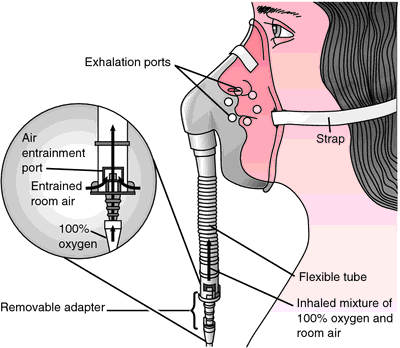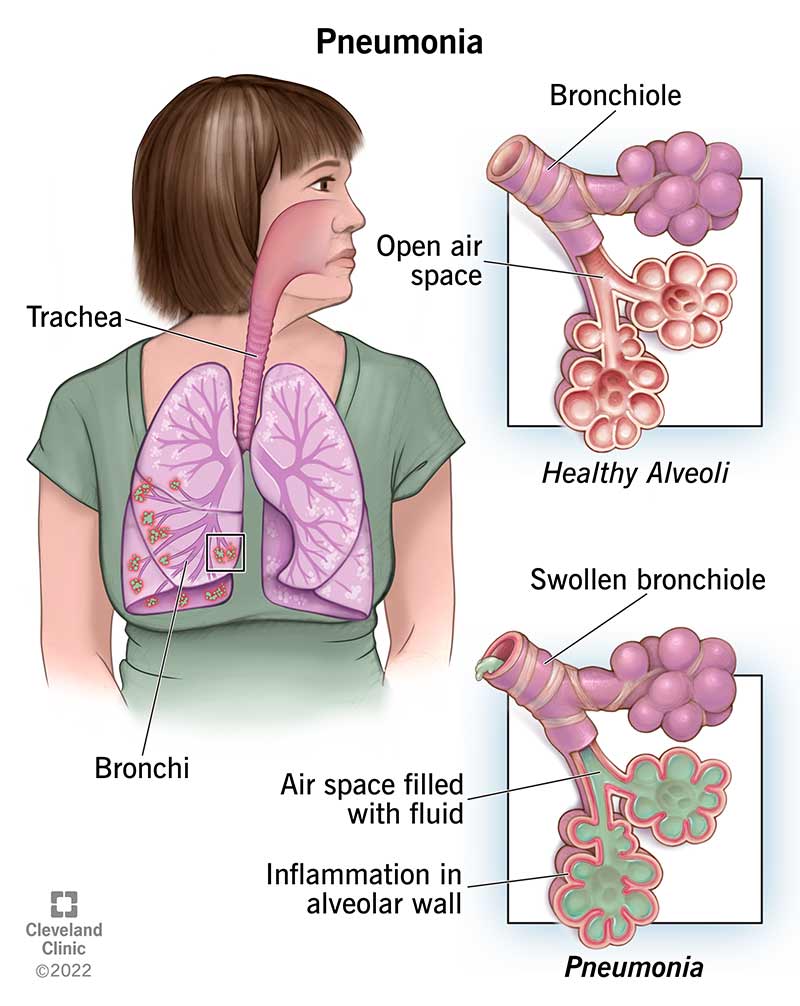Which of the following is a characteristic of a Venturi mask?
Reduces rebreathing of exhaled air.
Delivers high percentages of oxygen at flow rates of 10 to 15 L/min.
Provides a precise amount of oxygen.
Works independently of client breathing factors and flow of oxygen.
The Correct Answer is C
Choice A reason:
Reducing rebreathing of exhaled air is not a primary characteristic of a Venturi mask. This feature is more associated with non-rebreather masks, which have a one-way valve to prevent exhaled air from being inhaled again.
Choice B reason:
Delivering high percentages of oxygen at flow rates of 10 to 15 L/min is not specific to Venturi masks. Non-rebreather masks are typically used for high oxygen flow rates. Venturi masks are designed to deliver precise oxygen concentrations at lower flow rates.
Choice C reason:
Providing a precise amount of oxygen is the key characteristic of a Venturi mask. Venturi masks are equipped with color-coded adapters that allow for the delivery of specific oxygen concentrations, regardless of the patient’s breathing pattern.
Choice D reason:
Working independently of client breathing factors and flow of oxygen is not entirely accurate. While Venturi masks do provide a consistent oxygen concentration, they still depend on the flow of oxygen set by the healthcare provider.

Nursing Test Bank
Naxlex Comprehensive Predictor Exams
Related Questions
Correct Answer is C
Explanation
Choice A reason:
Notifying the physician immediately is not the first action to take. While it is important to keep the physician informed, the nurse should first implement measures to alleviate the client’s pain and discomfort.
Choice B reason:
Increasing the oxygen from 2 to 4 liters/minute may be necessary if the client is experiencing hypoxia, but it is not directly related to managing pleuritic chest pain. The primary focus should be on pain relief and comfort.
Choice C reason:
Teaching about splinting the chest when coughing is the most appropriate action. Splinting helps to reduce pain by stabilizing the chest wall during coughing, which can be particularly painful for clients with pleuritic chest pain.
Choice D reason:
Obtaining an electrocardiogram (ECG) is not immediately necessary for managing pleuritic chest pain caused by pneumonia. An ECG may be indicated if there are concerns about cardiac issues, but it is not the primary intervention for pleuritic pain.

Correct Answer is C
Explanation
Choice A reason:
Reducing rebreathing of exhaled air is not a primary characteristic of a Venturi mask. This feature is more associated with non-rebreather masks, which have a one-way valve to prevent exhaled air from being inhaled again.
Choice B reason:
Delivering high percentages of oxygen at flow rates of 10 to 15 L/min is not specific to Venturi masks. Non-rebreather masks are typically used for high oxygen flow rates. Venturi masks are designed to deliver precise oxygen concentrations at lower flow rates.
Choice C reason:
Providing a precise amount of oxygen is the key characteristic of a Venturi mask. Venturi masks are equipped with color-coded adapters that allow for the delivery of specific oxygen concentrations, regardless of the patient’s breathing pattern.
Choice D reason:
Working independently of client breathing factors and flow of oxygen is not entirely accurate. While Venturi masks do provide a consistent oxygen concentration, they still depend on the flow of oxygen set by the healthcare provider.

Whether you are a student looking to ace your exams or a practicing nurse seeking to enhance your expertise , our nursing education contents will empower you with the confidence and competence to make a difference in the lives of patients and become a respected leader in the healthcare field.
Visit Naxlex, invest in your future and unlock endless possibilities with our unparalleled nursing education contents today
Report Wrong Answer on the Current Question
Do you disagree with the answer? If yes, what is your expected answer? Explain.
Kindly be descriptive with the issue you are facing.
